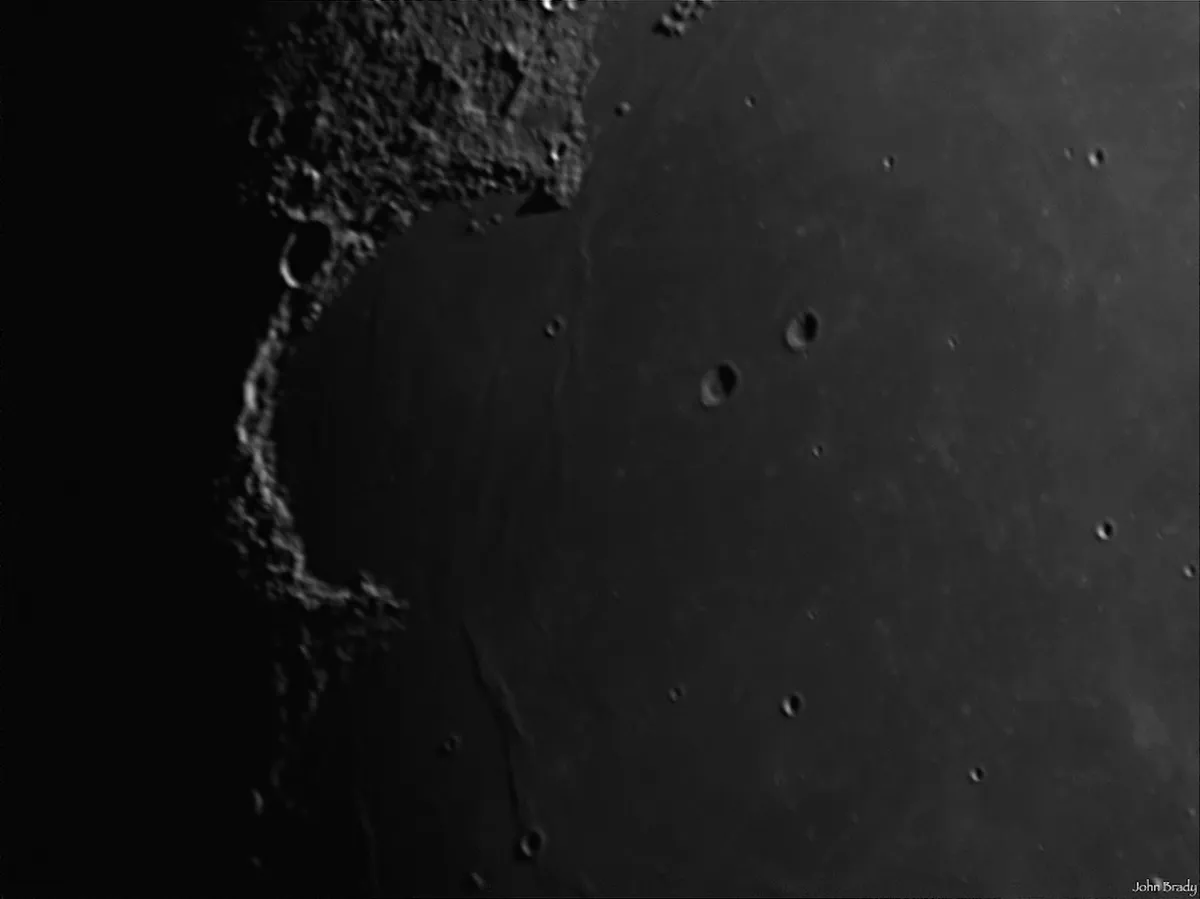One of the loveliest features of the Moon has to be the Sinus Iridum or Bay of Rainbows. It leads off the vast Mare Imbrium and was shown and named by the famous lunar observer Giovanni Riccioli in his map drawn in 1651.
In those days, of course, it was generally believed that the dark areas really were seas, and that the Moon could well be a world suited to life.
For more info on lunar observing, read our guides on how to observe the Moon and the best features on the Moon.
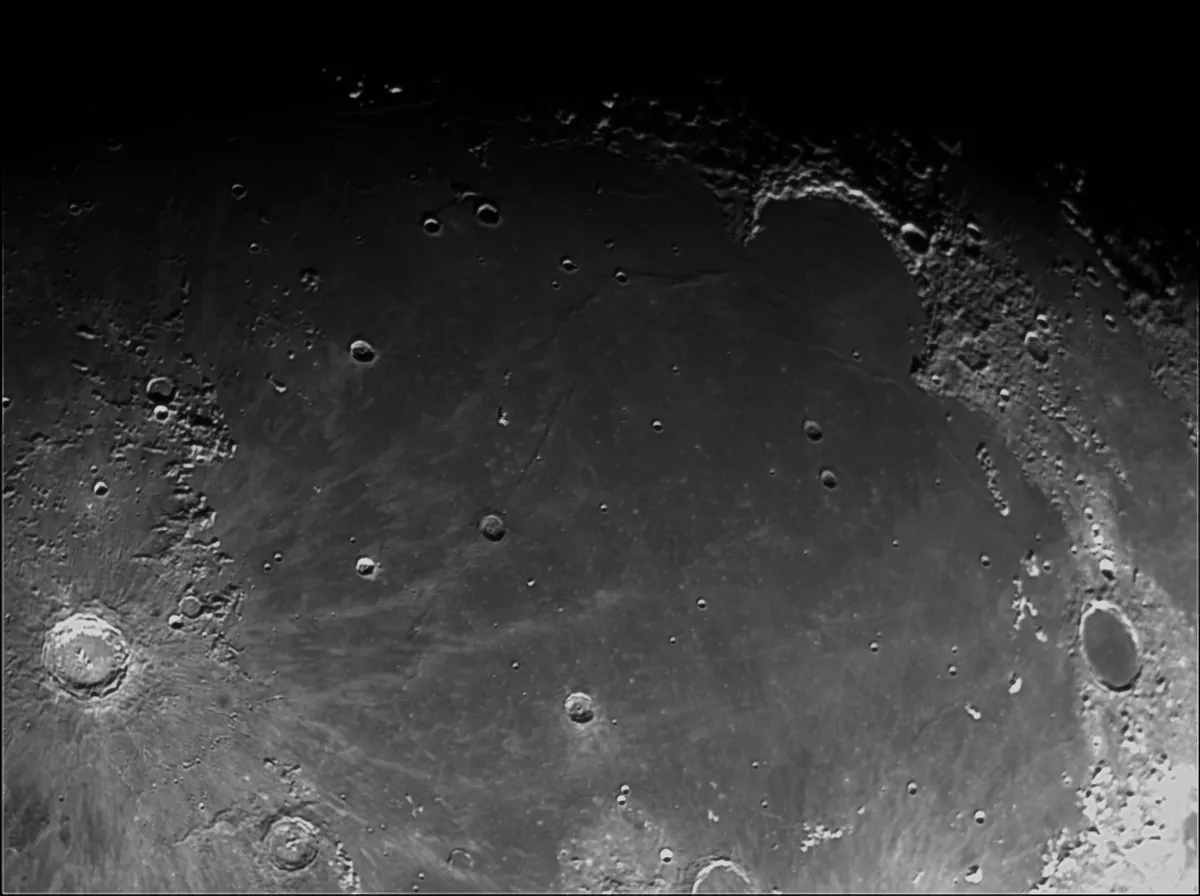
Sinus Iridum is called a bay, but it is really a crater whose seaward wall has been virtually destroyed; only a few very low, disconnected fragments can be traced.
Elsewhere the mountainous ‘wall’ is continuous and fairly high, though the outermost edge is disturbed for a short distance by the prominent crater Bianchini.
The continuous section is bounded by two capes, Promontorium Heraclides and Promontorium Laplace.
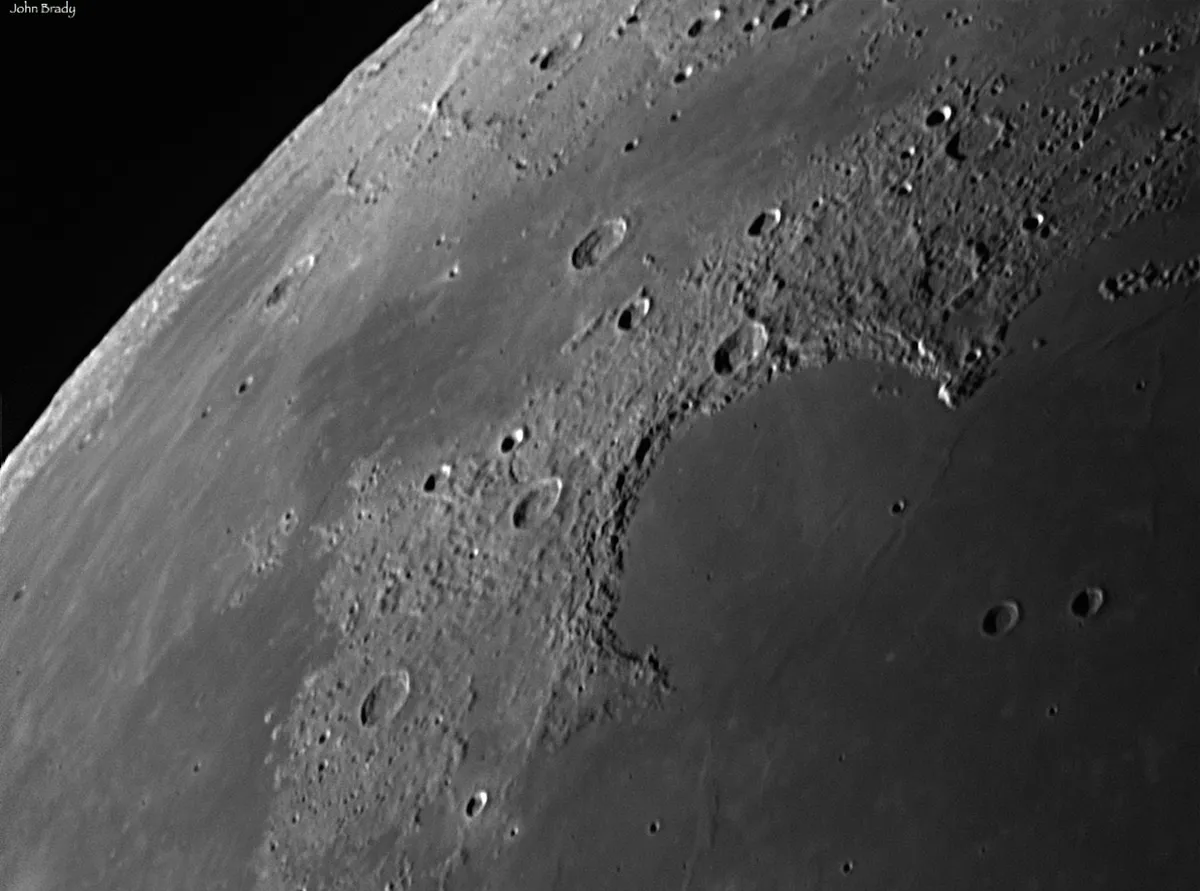
Facts about Sinus Iridum
- Size: 236km
- Age: Unknown
- Location: Latitude 44°N, longitude 32°W
- Recommended observing equipment: 4- to 6-inch telescope
The floor of Iridum slopes downward from the Mare Imbrium - one of many lunar maria - so that at the far side it is about 61m lower than the level of the mare.
There is nothing quite like this anywhere else on the Moon, but the sequence of events seems to be fairly straightforward.
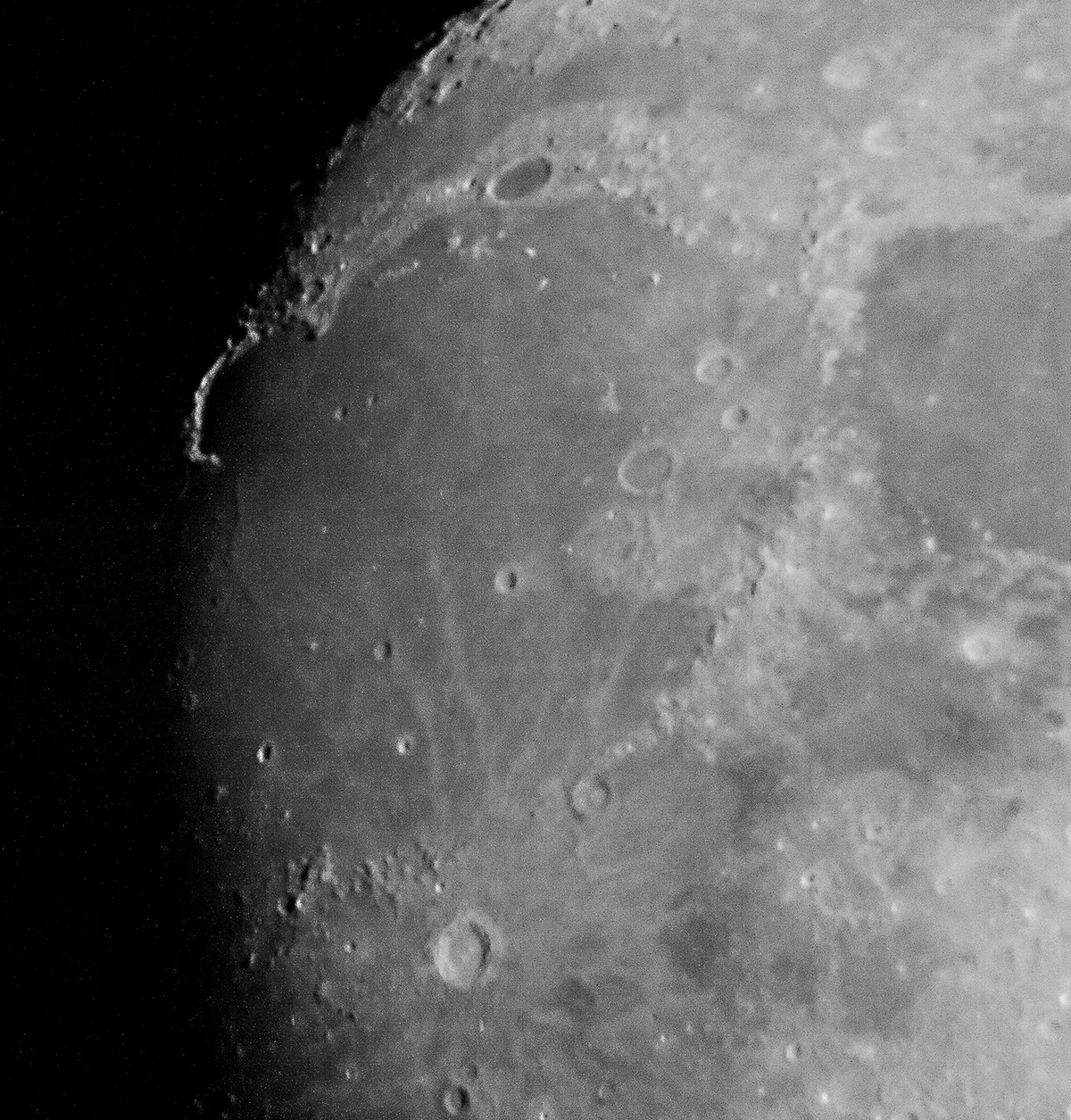
The mare itself was formed during the lunar epoch named after it – the Imbrium – which ended over three billion years ago, so it post-dates the Great Bombardment.
The Iridum impact followed before the great lava floods, which accounts for the inundation of the seaward wall.
I have said that Sinus Iridum is one of the loveliest features of the Moon. So it is, provided you catch it at the right moment.
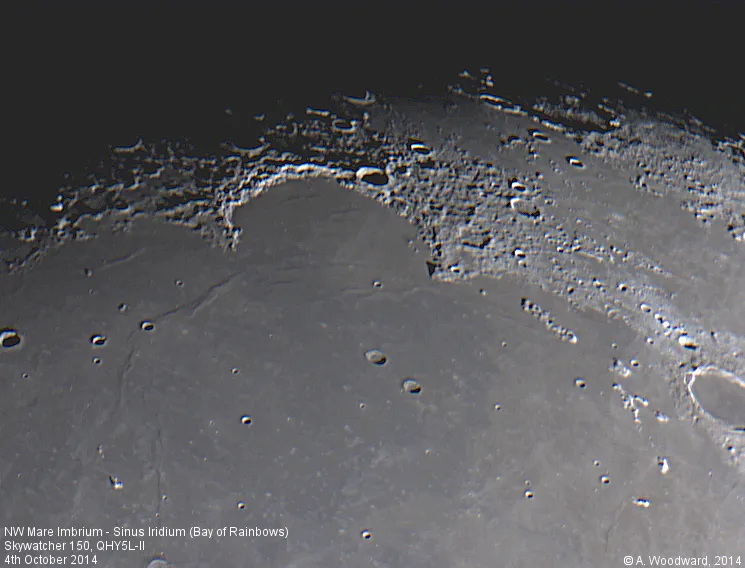
As the Sun rises over it, the mountainous border is illuminated first, and the tops of the peaks catch the sunlight while the floor below is still in darkness.
The result is that the wall seems to stand out beyond the terminator, giving the impression that it is completely detached from the main body of the Moon.
Lunar observers refer to this as the ‘Jewelled Handle', one of many clair-obscur effects on the Moon.
This occurs once in every lunar cycle, well before full Moon, but it does not last for long, and as the sunshine creeps on to the lower lying floor the ‘handle’ effect vanishes.
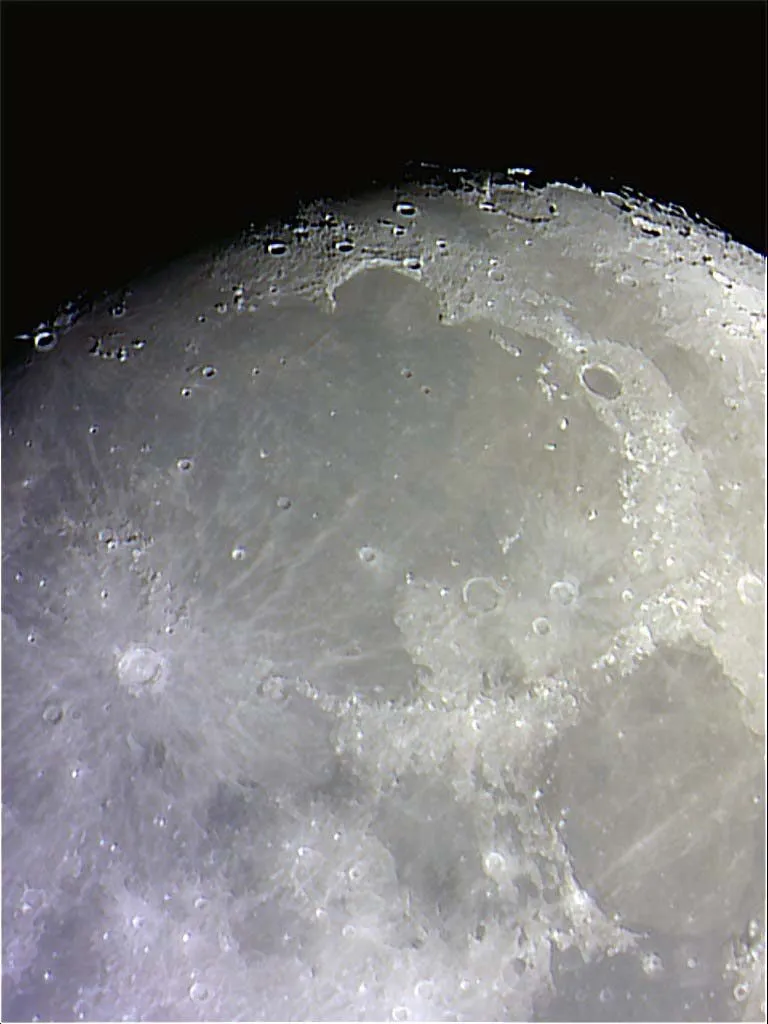
It is fascinating to follow the changes as the Sun’s altitude increases; even a small telescope will show them well.
The floor itself is very smooth, and there is only one reasonably well-marked craterlet, E.
Sinus Iridum can always be identified whenever it is sunlit; note the two well-marked craters Helicon (25km wide)and Le Verrier (20km wide) on the Mare Imbrium to the north.
Except at the time of sunrise, the area seems ordinary enough – but at the coming lunation, make sure that you do not forget to watch for the glory of the Jewelled Handle.
